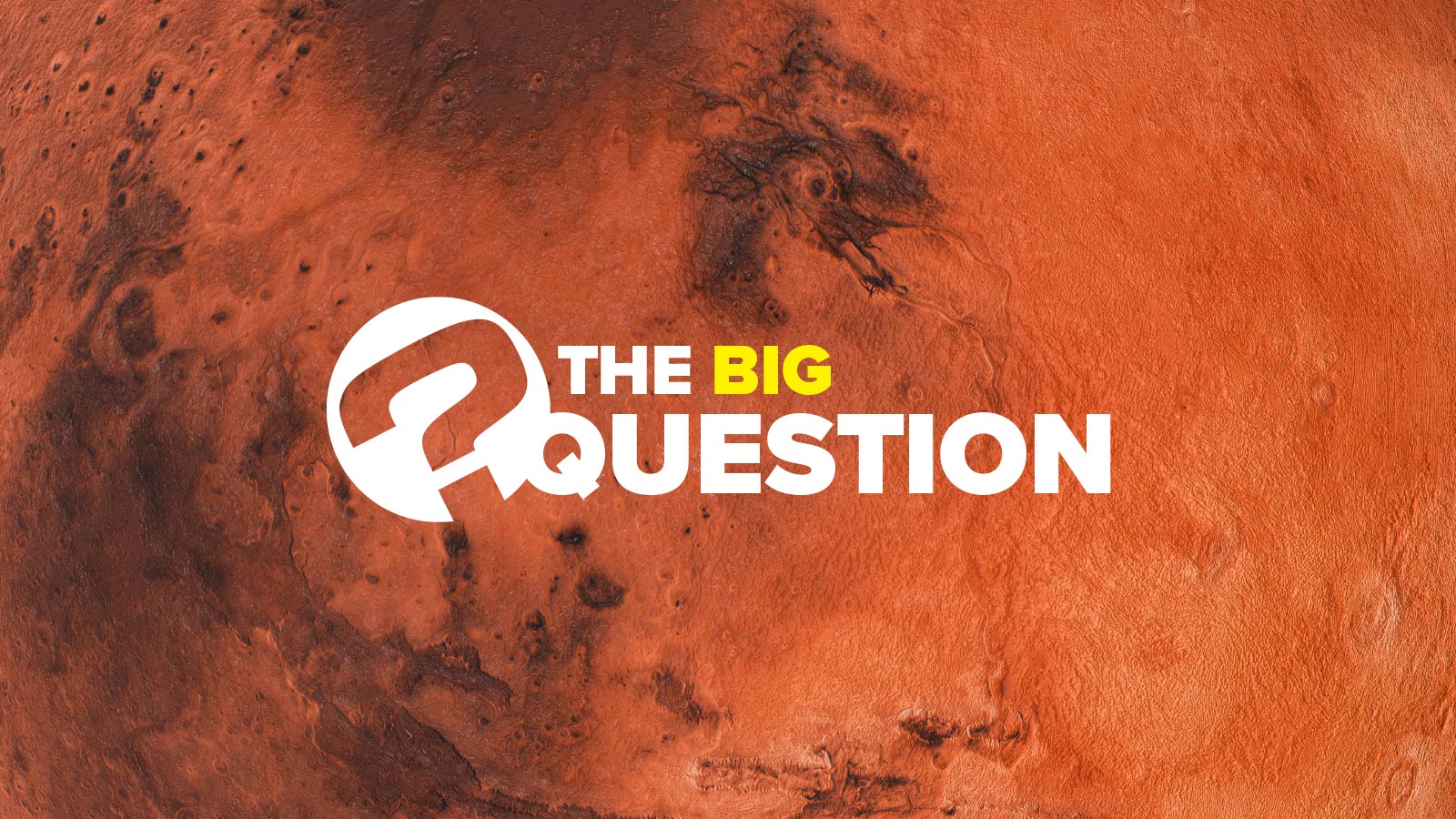Stay Up to Date
Submit your email address to receive the latest industry and Aerospace America news.
With President-elect Donald Trump and Elon Musk palling around at Musk’s Starbase in Texas and Mar-a-Lago after the election, it’s reasonable to wonder if U.S. tax dollars are about to be directed toward Musk’s goal of establishing a permanent human settlement on Mars. NASA has long voiced a desire to send astronauts to explore Mars (the latest target being sometime in the 2040s), but it does not yet have a firm plan to do that, and it has never embraced human settlement as a goal. For example, the Crew Health and Performance Exploration Analog, or CHAPEA, missions it is funding are meant to simulate “year-long stays.” Is a permanent presence possible? Here’s what six space community leaders have to say.
Yes. Humans will eventually have a permanent presence on Mars because of our spirit of exploration and the opportunity to learn on the first habitable planet other than our own. And it’s a relatively close opportunity to hone the space exploration skills we will have developed on the moon. How big that presence becomes is a function of questions that we can’t answer yet: What is our space travel capability by the time we settle on Mars? Can we go farther? Is it going to be a way station to more distant destinations?
I can’t put a timeline on Mars settlement, but I do think it’s going to be many years. The logistics of the inaugural mission under CHAPEA, a multidisciplinary, collaborative project, were very complicated. Even putting something on Earth to look at a subset of factors important for Mars exploration was complicated. That being said, new technologies may accelerate it: improvements in rockets, communications, food production and what we learn from the moon.
The overall CHAPEA project is looking at the impact of different challenges people will face in extreme environments, like Mars. In my analog, we had Mars-realistic communication delays. When we were the farthest from the Earth, it was over 22 minutes one way, meaning at least 45 minutes to get information or answers. The crew worked out unique ways to deal with that for communicating with the NASA ground crew and in our personal communications. We did not speak to anyone else face-to-face for over a year, so we relied on each other a lot!
We also tested food growing and production systems. While some food will be brought to Mars, we will have to figure out how to produce some food on Mars to keep people healthy when under the physical challenges of another planet. While we did not have the radiation and gravity challenges in my analog mission, we were under stress due to isolation, resource restrictions and the communication delay.
It was a very positive experience overall. It wasn’t always easy, but I want to commend NASA for the support that they gave us. I’m very proud that the crew managed to be productive and cohesive for the whole mission.
My hope, as a scientist and as a human being, is that we can be very thoughtful and intentional with our approach to going to Mars. What do we bring to the surface when we go to planets or the moon, and what will we leave behind, such as waste products, garbage or even our own natural bacteria? How will that impact that environment? Also, in all cases, the best way to do science is collaboratively. How are we going to deal with each other in space or on Mars?
Yes. In addition to engineering and physiological challenges, Mars has special psychosocial stressors. There’s the allostatic stress of long-term low gravity and radiation. Whatever that does to your body is going to affect your emotional state. You’re going to have extensive isolation and monotony. You’re going to be with the same group of people for the two to two and a half years of the first Mars mission. You’ll be dependent upon yourself because of the time delay in communication. That’s different from the International Space Station, where lots of the activities are done with planning and in cooperation with mission control. Also, there’s the Earth-out-of-view phenomenon that I’ve written about with my colleague, Dr. Dietrich Manzey. Humans have never experienced seeing the Earth as an insignificant dot in the heavens. That might enhance the sense of isolation and lead to depression or homesickness.
Looking at Earth colonization, people have described different phases. For colonies in the Pacific, there was a pioneering phase. Then a consolidation phase, where you set up norms of how to govern yourself. Finally, as things become secure in terms of growing food and survival, the colony stabilizes and starts to become an entity. That might occur in a Mars colony, but then you have the distance. Earth will have an impact on any Mars colonies, but perhaps less than on a lunar colony, where you’d be three days away. A Mars colony would start developing a sense of independence and autonomy sooner than a lunar colony. Resupplying from Earth will be slow, so a lot of oxygen and fuel will have to be generated on Mars from local resources. The crew will be fairly autonomous from the get-go. After a while, the colony may want to break away from Earth or form its own nation.
Presumably, colonists will have some way to go back to Earth. Nevertheless, it’s going to be a long six-, seven-month journey. For all intents and purposes, they will be based on Mars and have to get along. The governance structure may vary. They will probably have a semi-military command structure. In time, it may become more democratic as the colonists see themselves as a separate entity. They might have different family structures, depending on the ratio of men and women. If children are born, if they can survive the lower gravity of Mars, they might have a communal setup that reflects the situation of being so far away from home. The social structure could vary according to what the psychological climate is like in the new colony.
Yes. I’m not sure I’ll see it my lifetime, but I work on making this a reality every day. The first human explorers on Mars will have a scientific mandate: the search for life. It’s a roughly eight-month trip in an isolated, confined environment, so my preference is that they stay on the surface as long as possible to find possible evidence of life, past or present. Then, it’s a year-and-a-half return trip. It’s not ethical for it to be a one-way trip if it’s funded publicly.
That is the first phase of humans on Mars; there could be a second phase and a third phase. Can we live off the land? Have settlements or towns or communities? I don’t have illusions that we’ll have millions of people in large cities. We’ll have explorers. Antarctica and some places in the Arctic may be our best analogs, and they are infinitely more hospitable than Mars.
We should be cautious and have humility in the beginning. We have a lot to learn and it’s risky. People are going to die. We need to communicate the high risk of exploration missions. What’s going to kill our astronauts? The main potential showstoppers are radiation, the psychosocial aspect and musculoskeletal deconditioning, or an unforeseen mission catastrophe.
Physiologically speaking, radiation is No. 1. We’ve been exploring on Mars for the past 50 years with orbiters, landers, rovers and a helicopter. We know quite a bit about the radiation environment. Our research provides solutions to protect humans during EVAs, in habitats and laboratories.
Then there’s the psychosocial aspect. Mars is beautiful, red and dusty. But when Earth is just a little speck, that’s going to be interesting. Human factors, coping and teamwork will be paramount. Most of our experience in this area comes from analogs and expeditions in submarines, Antarctic and Arctic exploration. When it goes right, it’s great. But when it goes wrong, sometimes it goes terribly wrong.
One of my specialties is investigating musculoskeletal deconditioning. We’re measuring 1-2% bone mineral density loss per month on the International Space Station. That is with hours of exercise every day. Mars gravity is three-eighths of Earth’s gravity. We can all slam dunk a basketball — one of my life dreams! People are going to be able to work well in it, but it’s still low gravity. How we prepare for, monitor, address and try to prevent the bone loss will be a major issue.
Moon settlements will give us the needed technology push and experiential learning. We need a spacesuit, life support systems, habitats, rovers, robots. And heavy-lift launch capability, which is coming right along, will facilitate more people going.
Yes. It’s a matter of when. When I was working at SpaceX and on Raptor and the beginnings of Starship, I thought about it a lot. We can do a flags-and-footprints mission in the next five to 10 years, and we should because we need to better understand the environmental factors. Recent Mars probes have measured radiation. Are there caves for settlements? There is water on Mars for drinking and to create propellant and other things, but it might be upwards of 10 or 20 kilometers deep in rock. We may have to bring mining equipment to get to the water.
The moon is a great first step. You’re only a few days away from getting help if trouble ensues, and it will, because humans make mistakes. On Mars, you’re somewhere between six and 24 months from getting help, depending on where the planets are. We’re going to have to shorten the time frame to get there. With today’s tech, a trip is at least nine months each way. How many humans are going to sign up for a nine- to 12-month journey with no certainty that they’re going to survive? Then, they’re going to have to stay either a very brief time or a very long time. It would be a shame to only be on the surface for two weeks before you spend another nine months coming home.
We could have an Antarctic-style research station in the next decade or two, but colonization implies a self-sustaining entity. The Antarctic research stations require constant resupply when the weather and seasons allow.
We’ve got a lot of work to do. New space companies and engineers, in general, tend to look at the tech. That’s the fun part, but you’ve got to bring in doctors and psychologists and people outside of space tech to figure out how we keep people alive and thriving in a very austere environment.
You probably need to pre-position a lot of assets. We’re a few years away from being able to do that. SpaceX has targeted this huge payload capability for Starship to pre-position assets there. Then if there’s trouble, people have spacecraft to get home. But you also need the ability to autonomously make propellant for the return trip. That’s possible thanks to the carbon dioxide and water. Let’s demonstrate we have access to water, because that’s going to be key to getting people there and back. A one-way trip is going to appeal to a very limited set of the population, unless there’s some sort of catastrophe on Earth.
Maybe. Elon Musk is saying that in the next 30 years, we’ll have a million people living on the Martian surface. I don’t think that is going to happen. When most people talk about settlement, they mean families having children who grow up to have their own children. The goal, ultimately, is to have settlements become self-sustaining, which means they make everything they need from resources found on Mars.
There are big problems that we still need to solve. We need to figure out how to protect human bodies from space radiation. Most proposals involve piling meters of regolith over a habitat. I don’t think that’s what most of us imagine when we think about living on the Martian surface. We imagine geodesic domes, red skylines and seeing the sun rise on a foreign planet, not living underground like a mole. We don’t know if 40% gravity is enough for bones and muscles to develop appropriately. We don’t know if we can have babies on Mars yet.
The International Space Station is regularly resupplied with food and equipment. Round trips to Mars are two to three years long. It makes sense to go to the moon first to test habitats we’re planning on using for Mars settlements, and it would be great to have a human living on the lunar surface for three years. That would be longer than anyone has been in space consecutively. They’d be exposed to one-sixth Earth’s gravity and exposed to space radiation. If the shielding works, we can port it over to Mars.
Most of the funding for Mars settlements is coming from SpaceX. If we’re serious about settlement, we need to do research on human reproduction. We need systems that recycle everything like Biosphere 2 in the 1990s or China’s Lunar Palace, which recycled water and grew 78% of the food by mass. Mealworms were the protein source because they could eat the parts of the plants that the people couldn’t eat. Lunar Palace had three people living in the facility. The carbon dioxide levels went up and down wildly until two big guys were switched with two smaller women. Having these sorts of recycling systems running on Mars is not going to happen in 30 years.
Over many generations, Mars settlements could happen. If this becomes the next Cold War or a new space race, more money could get thrown at the problem and settlements could scale up quickly. But the self-sustaining part is hard to imagine. Computer chips are small and light. It’s easier to imagine filling a rocket ship with them than telling Martian settlers to build their own computer chip factory.
Yes. I believe that Starship is going to be successful. It is a fully reusable heavy-lift vehicle with an operational concept of being able to be refueled in low-Earth orbit and sent to Mars. If Starship is successful, it will be copied.
Elon Musk is pushing for a humans-to-Mars program now. He has the ear of Trump. That will lead to exploration. Through exploration, we’ll learn how to operate on Mars and create a scientific base. How do we get from there to settlement? A key factor will be used launch vehicles. Musk told me at one time that he thought he could build the Starship upper stage for $10 million, which means that either he or a copycat will, at some point, be willing to sell them for $20 million. Someday, they will be available used for $2 million. If one of these can transport 100 people to Mars, that’s $20,000 a person. That is a cost that a person of moderate means could afford if they want to pull up stakes and go to a new world.
There will always be groups of people who want to be able to go somewhere where they can cut their own path. Once that is technically possible, there will be settlements.
We could get our first human expedition on Mars within 10 years. That will require surface systems, spacesuits, vehicles, life support systems and power systems. The Musk mission architecture is a variant of my Mars Direct architecture, which requires return from Mars with propellant made on the Martian surface, methane-oxygen fuel made out of water and carbon dioxide, both of which are clearly available on Mars. But it takes power. Musk’s plan would require a 600-kilowatt nuclear reactor, which would probably need to be developed by the government because it involves controlled materials. That is why this program needs to be a public-private partnership.
If this is perceived as a hobby horse of a very partisan group, it stands a high chance of being canceled when political fortunes change. If they can make this a national program, rather than a Trump program, we can have a substantial permanent Mars base 10 years after the first expedition: in the 2040s-2050s.
I do not believe that Mars will be settled by fleets of 1,000 Starships every two years with 100,000 people. It’s going to be much more like the settlement of America with relatively small groups starting settlements. The settlements will establish greenhouses to grow food and various industries to turn Martian iron oxide into steel, create plastics and other materials. The agricultural-industrial base will allow the population to increase.
About Debra Werner
A longtime contributor to Aerospace America, Debra is also a correspondent for Space News on the West Coast of the United States.
Related Posts
Stay Up to Date
Submit your email address to receive the latest industry and Aerospace America news.










